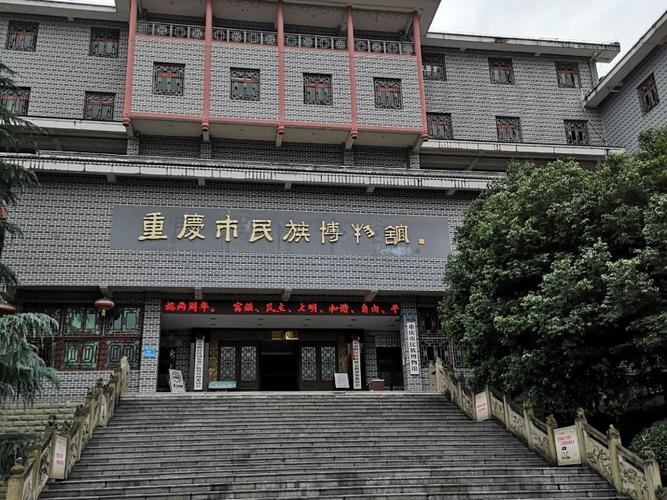Danxing County was established in the sixth year of Jian’an in the Eastern Han Dynasty (201 AD) and was named after the abundant cinnabar in the territory. It has been more than 1,800 years old. It is a minority ethnic group, with the Tujia and Miao ethnic groups accounting for 75.3% of the population. It has a unique and rich ethnic customs and has won the title of National Demonstration Area for National Unity and Progress. It is a national first-class revolutionary old area, the first stop of the Red Third Army entering Chongqing, and the hometown of Wan Tao, the former political commissar of the Red Third Army. It has left the battle footprints of Liu Bocheng, Deng Xiaoping, He Long and other older generation proletarian revolutionaries, and was rated as a national double support model city. The spirit of the times of “preferring to work hard and unwilling to endure” is well-known throughout the country, and the “heavenly conscience” integrity culture is famous in the world.
1.Zhuoshui Scenic Area
Zhuoshui Scenic Area is located in Zhuoshui Town, Qianjiang District, and consists of three parts: Zhuoshui Ancient Town, Puhua River Leisure Agriculture Experience Park and Puhua Underground River. The scenic area is rich in tourism resources and has prominent ethnic characteristics. From “God’s conscience” to “God has eyes”, Zhuoshui Scenic Area is full of awe for nature and heaven.

Zhuoshui Ancient Town is one of the top ten landmarks in New Chongqing. It has “three palaces and six courtyards” including Wantian Palace, Wanshou Palace, Yu Family Courtyard, and Fan Family Courtyard, all of which are traditional historical and cultural buildings; exhibitions and display halls such as Tianli Conscience Culture, Apeng River Wetland Park, and Cultural and Art Museum; intangible cultural heritage such as Houhe Opera, Baishou Dance, Shijituo Earthenware, Mung Bean Powder, and Quankong Wine, as well as colorful ethnic festivals. The ancient town has the Zhuoshui Wind and Rain Corridor Bridge, which is a Guinness World Record and was awarded the title of “World’s First Wind and Rain Corridor Bridge” by the World Corridor Bridge Society. The bridge is a Tujia stilt building style, spanning the Apeng River and Puhua River, and is 658 meters long.

Puhua Underground River is one of the core landscapes of Zhuoshui Scenic Area. It consists of three natural bridges, underground underground rivers, large funnels, geysers, Puhua Canyon, etc. The landscape is charming and unique. The most peculiar landscape is “the sky has eyes”. Going upstream from the underground river, there are three natural stone bridges with basically the same width. Looking up, you can see the three bridges. In the middle of the three bridges are two elliptical funnels, each about 100 meters high. Among them, the funnel between the first and second bridges is 41 meters wide, and the funnel between the second and third bridges is 52 meters wide. With the second bridge as the nose bridge, it forms an extremely rare “eye of the sky” landscape. The “Red Cave” karst cave in the canyon originated from the legend of the Ba nationality’s Linjun God and the Salt Water Goddess. Inside the karst cave, there are naturally generated thousand hills terraces, dripping lotus, double Pu caves, Buddha’s hand jasmine and other stalactite wonders, which are beautiful, and there are countless “millennium cave beads” scattered on the ground that are rare in similar caves in China.
2、Urban Grand Canyon
The Urban Grand Canyon, as it runs through the three major urban clusters of Qianjiang Old Town and Zhoubai and Zhengyang New Town, integrates the Urban Grand Canyon, Urban Grand Gorge and Urban Grand Cave. It is a rare “Urban Canyon Gorge” landscape in the world.
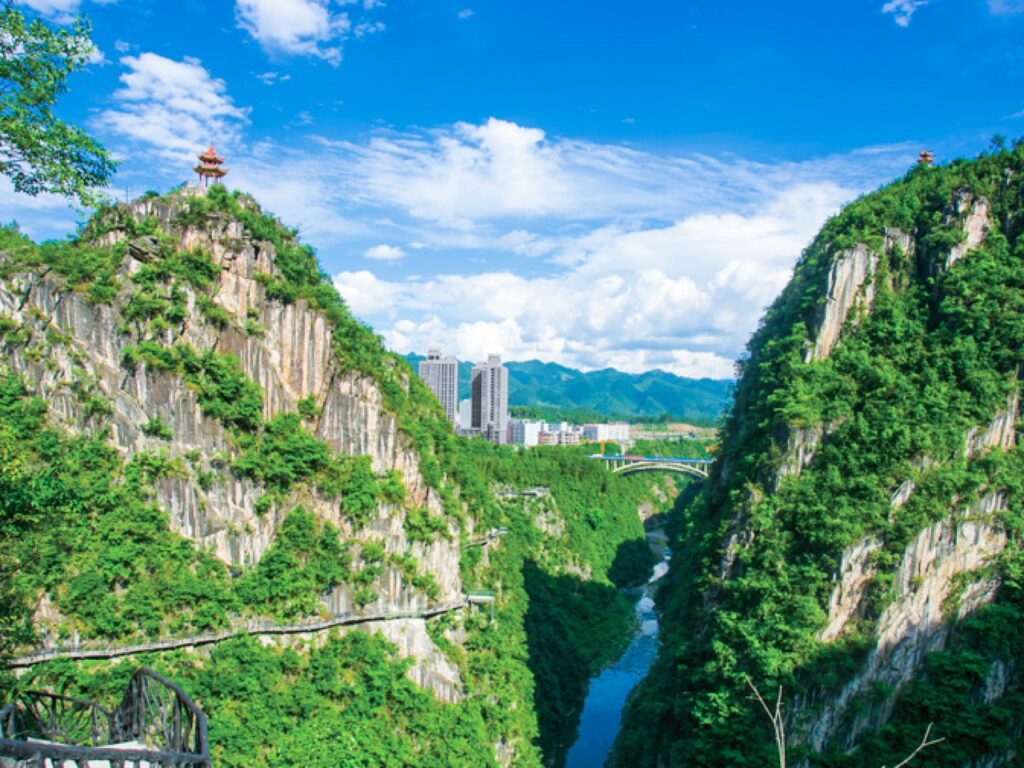
The urban canyon has a unique landform. It spans seven geological periods and has the characteristics of karst, gravel, Danxia and other landforms. There are cliffs on both sides of the canyon, dense forest vegetation, and dense caves. The canyon is 10 kilometers long, with an average depth of 200 meters and a vertical drop of 500 meters. The gurgling Qianjiang River flows through the canyon. The canyon walls, which were cut by knives and axes, are covered with ancient pines, like ink landscape paintings. The top of the canyon is full of undulating peaks and lush pine forests. The canyon is densely covered with caves, which are connected to each other and have caves within caves. It is like a maze. It is the only fantasy landscape in Dawuling that integrates canyon rivers, canyon cities, canyon experiences, and canyon culture.

The Grand Canyon of the City has magnificent scenery, including Guanyin Gorge, Baihu Gorge, Longjigang Stone Forest and other natural landscapes. It has the Guinness World Records – a huge cliff Guanyin statue that is 123 meters high; there are thrilling cliff plank roads with a vertical height of more than 300 meters; there are cultural landscapes such as Yixiao Pavilion, Liuxiao Pavilion, Guanyin statue, cliff carvings; there are amazing and wonderful experiences such as Echo Wall and Cihang Bridge. The winding canyon river, the primitive canyon scenery, and the rich Wuling Temple are integrated here.
3、Xiaonanhai
Xiaonanhai is also known as “Xiaoyinghai”. In 1856, a sudden earthquake created a high mountain freshwater lake that integrates mountains, water, islands and gorges – Xiaonanhai. The earthquake relics such as the big and small collapsed rocks, the broken cliffs and the dam built by rolling stones are clearly visible, and the landslide surface and rolling stones are well preserved. Surrounded by beautiful peaks, strange rocks stand at the mouth of the lake, streams linger by the lake, and the lake has many branches. The three islands of Chaoyang Temple, Laoguanping and Niubei Island are full of lush forests and bamboos, ancient pines blocking the sun, thatched houses and bamboo buildings, and chickens and dogs barking, which are a pastoral scenery.
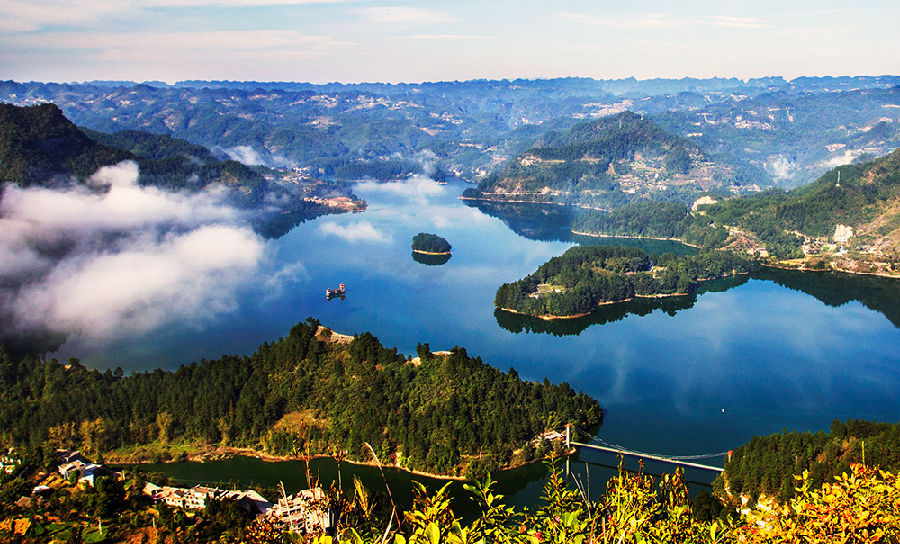
4、Shengui Gorge
Shengui Gorge is located in the lower reaches of the Apeng River. It is a national 4A-level tourist attraction. It is named because the two mountains at the mouth of the gorge resemble a pair of male and female turtles lying opposite each other. The high mountains and cliffs on both sides of the gorge, and the winding river channel, have formed the Tianmen, Giant Buddha, Sanlang Peak, Stone Wall Gallery, Bodao Ridge and other unique landscapes, showing the wonders of nature. Along the way, there are 27 bends along the river, including 28 gates such as Shenmen, Tianmen, and Renmen. The number of bends is rare in the canyon. The canyon is surrounded by lush forests and bamboos, the vegetation is primitive and simple, and the ecology is beautiful. From time to time, there are waterfalls rushing down on both sides of the gorge, which is elegant and interesting. It is full of poetic and picturesque meanings. It is a study room for dancing, a painting scroll, and a bed for scientific research.
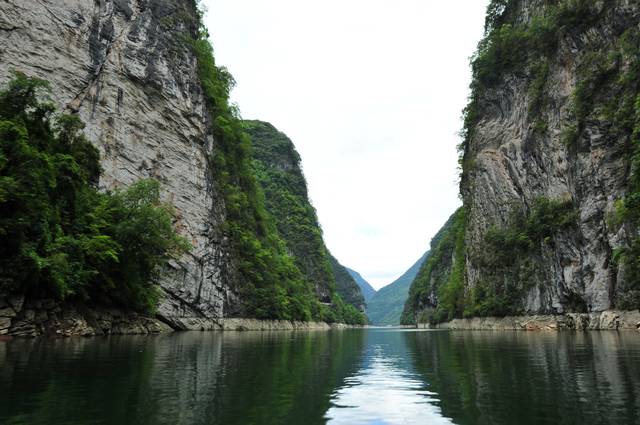
5、Guancun Scenic Area
Guancun Scenic Area, located in Fengjia Street, Qianjiang, Chongqing, covers a total area of about 1.58 square kilometers. It is the core scenic area of Apengjiang National Wetland Park. The scenic area is built along the river. It is a new rural pastoral complex with beautiful rural scenery as its main feature, integrating Tujia culture, wetland culture and military settlement culture. The scenic area mainly includes Apengjiang Flower Garden, Guancun Ancient Village, Taohua Creek, Zhiyu Ecological Tourist Park, Baihusuo, Laoma Manor and other attractions. During the Ming and Qing Dynasties, Guancun was a military fortress for the southern households of Qianjiang and the garrison of the southwestern Tusi. It was also an important water and land transportation route in Qiannan and an important wharf of the Yuyou Salt Road. Therefore, it was called “Guancun”, which means that the people stationed there were officials.
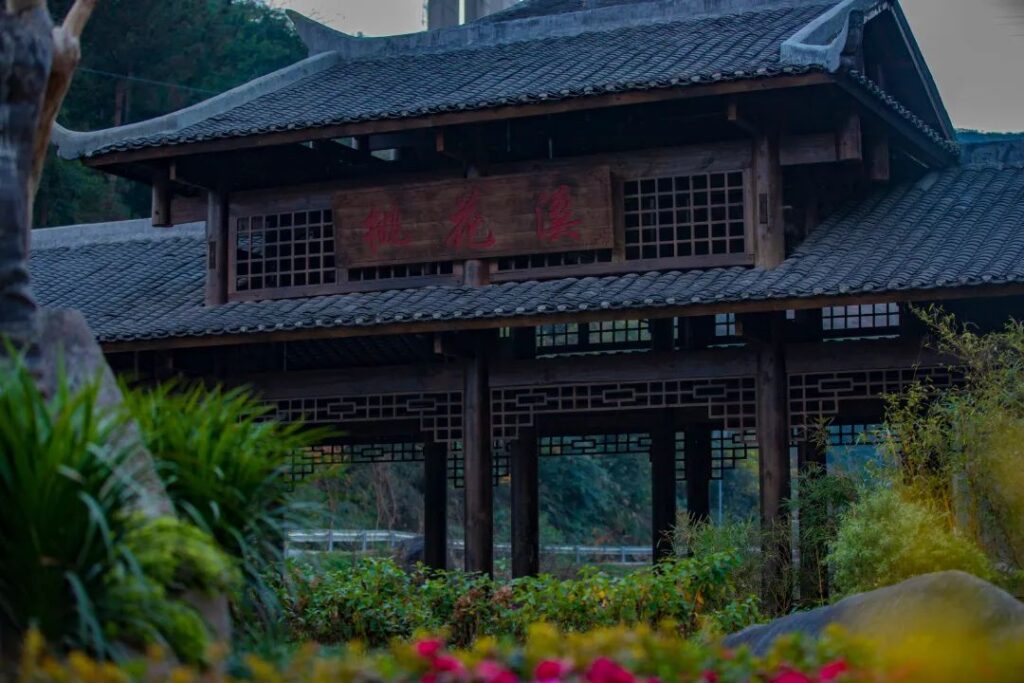
6、Alice Manor
Alice Manor is located in Zhongba Residential Committee, Fengjia Street, on the bank of Apeng River. It is a national 4A-level tourist attraction. Located in the “three points and one line” tourist loop of Apengjiang National Wetland Park, Qianjiang City Grand Canyon Scenic Area, and Zhuoshui Scenic Area, it is a manor with the theme of “love” culture, integrating wedding travel photography, high-end weddings, leisure and entertainment, study tours, and fashion parties. The scenic area covers an area of more than 800 acres, with a total investment of about 200 million yuan. It was funded by Hongye Group, a key state-owned enterprise in the district, and operated by Chongqing Alice Manor Cultural and Creative Co., Ltd.

The scenic area is linked by the Apeng River and supported by the Wuling Mountains. It is rich in natural and cultural resources, integrating rare vegetation, wetlands, European-style buildings, and experiential projects. It combines nature with fairy tales to present a different romantic style for tourists. The scenic area has many attractions such as Rose Square, Dream Space, and Mediterranean Style; commercial supporting projects such as the Four Seasons Sun Shed, Wedding Hall, and Commercial Street. It has newly built China Aerospace VR Project, karting, grass skiing, hot air balloons, zip lines, rock climbing, and intangible cultural heritage experience halls, etc. There are more than 40 experiential projects.
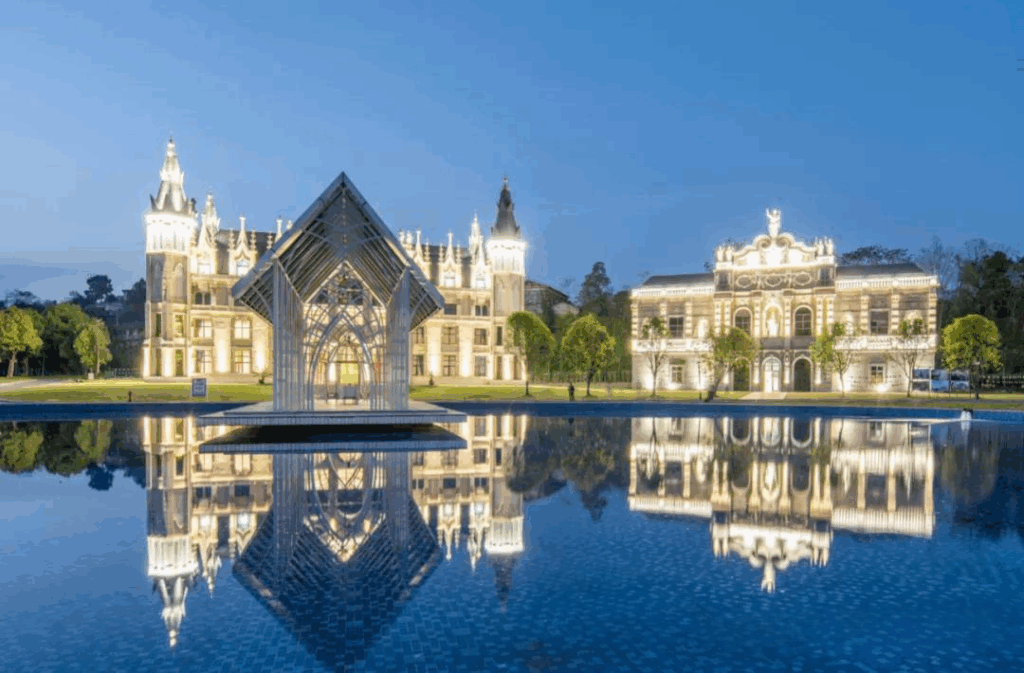
7、Shuicheping Old Street
Shuicheping Old Street is located in Shuishi Township in the southwest of Qianjiang, 50 kilometers away from the urban area, with an average altitude of 1,200 meters. The forest coverage rate of the township is 70%, and the negative oxygen ions are extremely rich. The average temperature in summer is about 25℃. It is a rural tourism demonstration site for high mountain coolness, leisure and health preservation. There are also Red Army Tree, Old Market, Qianqiu Tea Garden, Qilin Grassland, Millennium Tengwang and other landscapes.
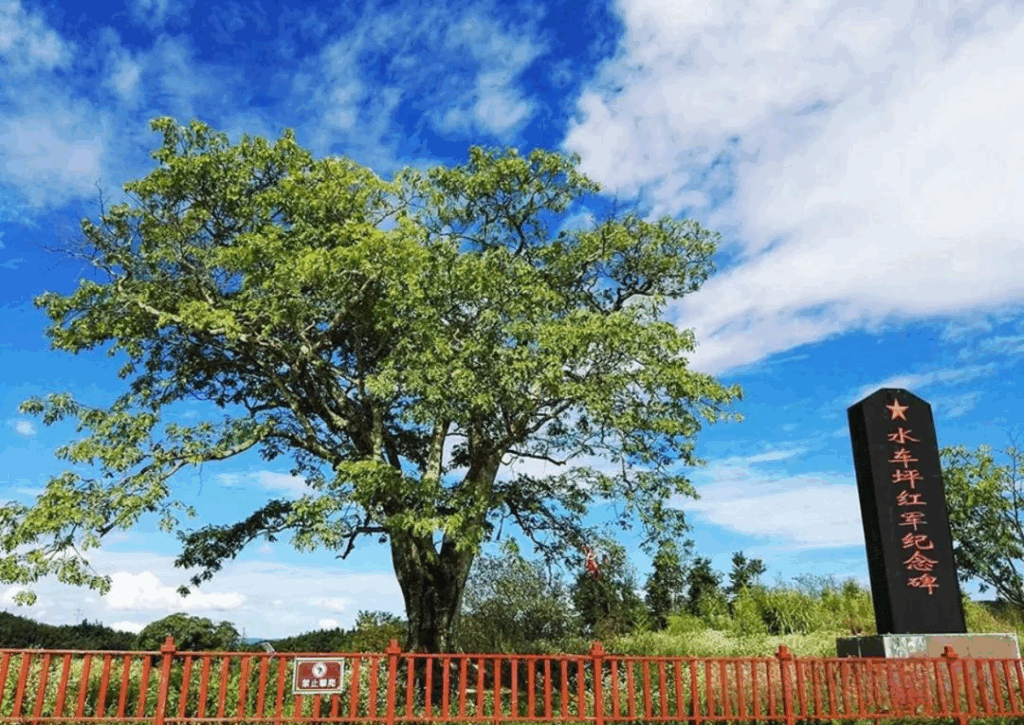
Shuicheping Old Street was once a traditional market town on the main road between Sichuan and Guizhou. He Long passed by here three times. On the hill behind Shuicheping Old Street in Shuishi Township, there is a 200-year-old soap locust tree. In May 1934, the Red Army attacked Pengshui and camped in Shuishi. He Long held a meeting under the soap locust tree to deploy the battle. Today, this place has become a revolutionary memorial site. People call this tree the “Red Army Tree” and erected the “Shuicheping Red Army Revolutionary Memorial Site Monument” under the tree.
8、Thirteen Tujia Villages
Tujia Thirteen Villages belongs to Xinjian Village, Xiaonanhai Town, 13 kilometers away from Xiaonanhai. The small place name is Banjiaxi. It is located in the mountains of Qianjiang National Forest Park. It has a good ecological environment and beautiful natural scenery. It is a veritable natural oxygen bar.
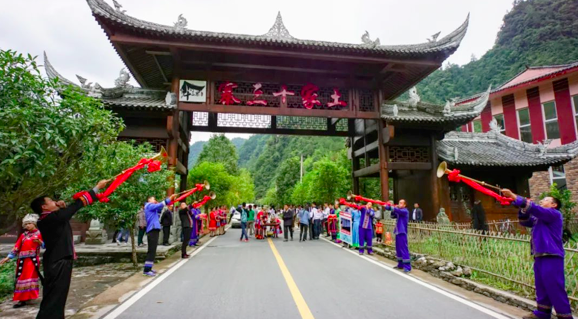
This is a living fossil of ethnic culture and the first Tujia ethnic cultural ecological museum in my country. It has preserved the original residential buildings with strong ethnic colors and the original production and living style, like a fairyland on earth, a paradise on earth, and a living specimen of the ethnic culture in the Wuling Mountain area. The Tujia people here live in clans with Banjia Creek as the axis, one surname in one village, and use the surname as the village name or village name, “one village, one product”, including Tanjia Village, Hejia Village, Baishou Village, Nv’er Village and other 13 typical Tujia natural villages. The large-scale stilt houses are backed by green mountains, with flying eaves and corners, carved dragons and phoenixes, wooden railings and flower windows, painted red and green, and are the dazzling pearls among the ethnic minority wooden buildings. The simple folk customs, resolute character, and rich culture have injected endless homesickness into this place.
9、Santanggai
Santanggai is building an international health tourism resort, which is the best area for viewing mountain scenery, sea of clouds and sunrise in Qianjiang. It is located in Santang Village, Baitu Township, southwest of Qianjiang District, more than 50 kilometers away from Qianjiang City, with an average altitude of about 1,400 meters and a maximum altitude of more than 1,500 meters. The summer temperature here is about 23 degrees, which is an ideal place to escape the summer heat. There are also Ziyang Cave, Santang Stone Forest, Guiwang Mountain, Millennium Tengwang, Huangjia Ancient Village, Eagle Rock, Changyanqian and other landscapes.
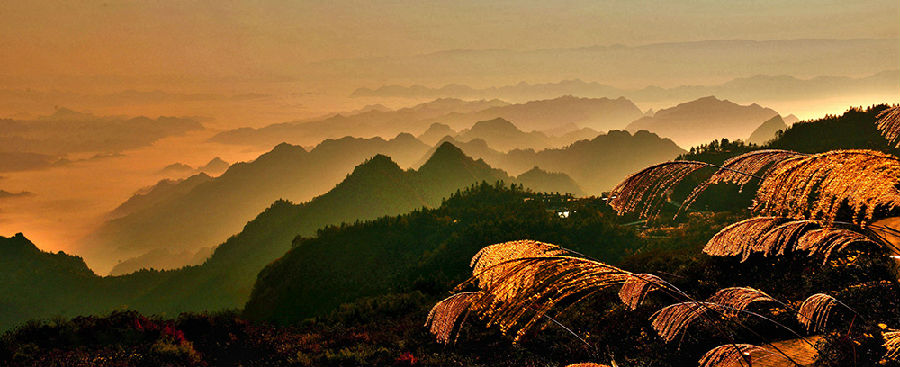
There is another place to the west of Santanggai, Shizhong Mountain, which is located in Xinhua Township and borders Pengshui. The mountain looks like a big bell and is a Buddhist holy place with a long history. There was an ancient temple on the top of the mountain, which has been worshipped for many years and its ruins still exist. There are natural landscapes such as the natural stone forest “Nine Gates and Eighteen Caves” and the Dripping Rock Waterfall near Shizhong Mountain.
10、Chongqing Museum of Nationalities
Chongqing National Museum is located in Qianjiang District. It is not only the first national museum in Chongqing and the only provincial and municipal national museum in Wuling District, but also one of the first national national unity and progress education bases and Chongqing patriotism education bases. Chongqing National Museum was completed in 2003 and officially opened to the public in September 2004. It covers an area of 1,200 square meters, a building area of 9,265 square meters, and an exhibition hall area of nearly 3,000 square meters. It has 7 exhibition halls, including the preface hall, historical time and space, beautiful home, production and life, folk customs, folk art and the exhibition of achievements in creating people.
